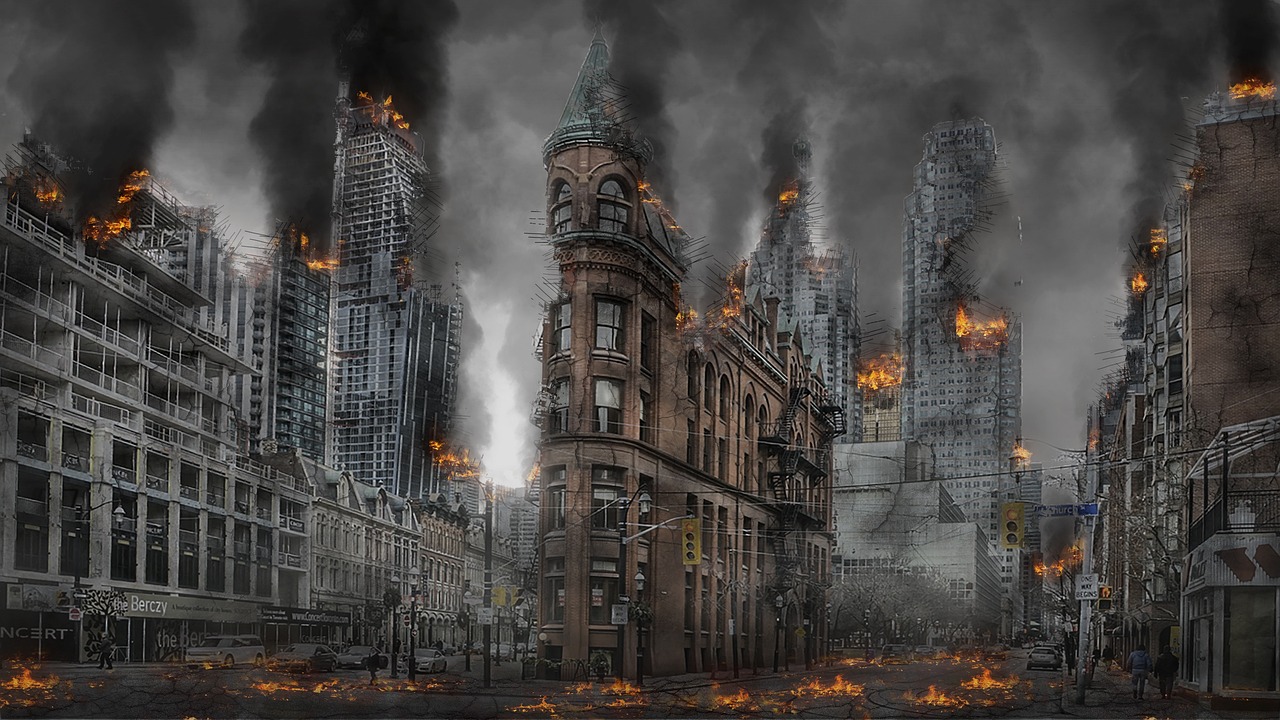Introduction
In the heart of many South Asian cities lie historic districts that serve as cultural touchstones, economic hubs, and living museums of architectural heritage. These areas—often characterized by narrow lanes, densely packed buildings, mixed commercial-residential use, and structures dating back centuries—present unique challenges when it comes to fire safety. The convergence of old electrical systems, combustible building materials, overcrowding, and limited emergency access creates conditions where a small fire can quickly escalate into a devastating tragedy.
The delicate balance between preserving cultural heritage and ensuring public safety requires thoughtful approaches to fire prevention, detection, response, and regulation. This article examines the complex challenges of fire safety in urban heritage zones, explores preventative measures and emergency protocols, and considers how communities can better protect these irreplaceable historic districts without compromising their cultural significance.
The Unique Fire Hazards of Historic Urban Areas
Architectural Vulnerabilities
Historic districts in cities across South Asia share common architectural features that, while culturally significant, present serious fire risks. Buildings constructed decades or even centuries ago were designed before modern fire safety standards existed. These structures often feature:
- Wooden frameworks and flooring that provide ready fuel for fires
- Shared wall construction that allows flames to spread between buildings rapidly
- Narrow staircases that become deadly bottlenecks during evacuations
- Limited natural ventilation that can accelerate smoke accumulation
- Lack of fire barriers between floors or adjacent buildings
- Minimal secondary exit routes
In many heritage districts, buildings originally designed as single-family residences have been subdivided into multiple commercial and residential units, adding additional occupation density without corresponding safety upgrades. The resulting overcrowding places more people at risk when emergencies occur.
Infrastructure Limitations
The infrastructure supporting many historic districts was never designed to accommodate modern commercial activities or high-density occupation. Common problems include:
- Electrical systems retrofit into buildings without proper planning or capacity
- Overloaded circuits from modern appliances connected to aging wiring
- Improper gas cylinder storage for cooking and heating
- Water supply networks with insufficient pressure for firefighting
- Narrow streets that prevent fire engine access
- Lack of fire hydrants or accessible water sources
- Absence of centralized alarm systems
Commercial Activities and Fire Risk
The commercial transformation of many historic districts further compounds fire risks. Areas that once housed traditional craftspeople have evolved into dense commercial corridors with higher risk profiles:
- Storage of flammable inventory in shops lacking proper containment
- Commercial kitchens operating without adequate ventilation or suppression systems
- Workshops using heat-generating equipment in confined spaces
- Increased use of plastic packaging materials that produce toxic smoke when burned
- Extended business hours that create around-the-clock fire risk
Case Studies: Learning from Historic District Fires
Chawri Bazar, Delhi (2019)
In June 2019, a fire broke out in Delhi’s historic Chawri Bazar area, damaging multiple buildings in the congested Old Delhi district. The fire reportedly started from an electrical short circuit and spread quickly through densely packed buildings. While casualties were fortunately limited, the incident highlighted several critical vulnerabilities:
- Fire engines struggled to navigate the area’s narrow lanes
- Water pressure was insufficient for effective firefighting
- Building modifications had blocked traditional ventilation systems
- Multiple businesses were operating without fire safety certificates
Anaj Mandi, Delhi (2019)
In December 2019, a factory fire in Delhi’s Anaj Mandi area claimed 43 lives. Located in an old district of the city, the building housed workshops and dormitories for laborers. Key factors contributing to the high death toll included:
- Illegal conversion of residential space to industrial use
- Blocked and locked exit routes
- Absence of fire detection or suppression systems
- Flammable materials stored throughout the building
- Workers sleeping in the same areas where manufacturing occurred
Nimtali, Dhaka (2010)
One of Bangladesh’s deadliest urban fires occurred in the historic Nimtali area of Dhaka in 2010, killing at least 117 people. The fire began with a transformer explosion and spread to nearby buildings where chemicals were being stored. Factors that contributed to the severity included:
- Unauthorized chemical storage in residential buildings
- Multi-story buildings with a single narrow staircase
- Locked rooftop exits
- Inability of fire trucks to access the narrow streets
- Absence of fire walls between adjacent structures
These case studies reveal common patterns in urban fire disasters. The combination of architectural vulnerabilities, infrastructure limitations, and regulatory failures creates conditions where even small ignition sources can lead to catastrophic outcomes.
Regulatory Frameworks and Enforcement Challenges
The Policy Landscape
Most South Asian countries have established building codes and fire safety regulations, but these face several implementation challenges in historic districts:
- Heritage preservation laws may conflict with fire safety requirements
- Retrofitting old buildings to meet modern codes is technically challenging and costly
- Jurisdictional overlaps between heritage conservation authorities and fire safety agencies create regulatory confusion
- Economic pressures incentivize property owners to maximize rentable space at the expense of safety
- Limited government capacity for inspection and enforcement
Enforcement Gaps
Even where appropriate regulations exist, enforcement often falls short due to:
- Insufficient fire inspector staffing relative to the number of buildings requiring oversight
- Corruption or influence that allows violations to persist
- Lack of technical expertise to evaluate heritage building safety
- Absence of coordinated databases to track inspections and violations
- Limited penalties that fail to deter non-compliance
Policy Innovations
Some cities are developing innovative approaches to address these challenges:
- Tiered compliance pathways that acknowledge the unique constraints of historic buildings
- Financial incentives for heritage property owners who invest in fire safety upgrades
- Community-based fire safety monitor programs that supplement government inspections
- Digital mapping of high-risk areas to prioritize enforcement activities
- Specialized training for inspectors focused on heritage district safety
Prevention Strategies for Historic Districts
Technical Solutions
While retrofitting historic buildings presents challenges, several technical interventions can significantly reduce fire risks without compromising heritage values:
- Compartmentalization of building sections to prevent fire spread
- Installation of smoke detectors and heat sensors that preserve aesthetic character
- Upgrading electrical systems with modern circuit protection
- Application of fire-retardant treatments for wooden elements
- Installation of discrete sprinkler systems or mist-based fire suppression
- Creating fire breaks between buildings where architecturally appropriate
- Improving exit pathways and adding emergency lighting
Community-Based Prevention
The human dimension of fire safety is particularly important in heritage districts, where community awareness and cooperation can compensate for structural limitations:
- Formation of neighborhood fire safety committees
- Regular fire drills for residents and businesses
- Community-managed emergency equipment caches
- Training programs for local fire wardens
- Public education campaigns about common fire hazards
- Development of community evacuation plans
Urban Planning Approaches
At the district level, urban planning interventions can improve fire safety while respecting heritage character:
- Creation of fire access corridors that double as public spaces
- Strategic placement of water tanks and pumps throughout the district
- Development of microgrids to reduce electrical system strain
- Designation of emergency assembly areas within walking distance of all buildings
- Installation of district-wide alarm systems
Emergency Response in Confined Historic Settings
Specialized Equipment and Tactics
Responding to fires in heritage districts requires equipment and approaches tailored to the unique constraints of these environments:
- Narrow-profile fire engines and pumps designed for confined streets
- Portable, high-pressure hose systems that can be carried through pedestrian paths
- Drone technology for aerial assessment of fire spread
- Specialized training for firefighters in heritage building construction
- Pre-positioned equipment caches in areas inaccessible to standard fire vehicles
Communication Systems
Effective emergency communication is critical in densely populated heritage areas:
- Mesh network emergency alert systems that can function during power outages
- Multilingual warning systems catering to diverse populations
- Pre-mapped evacuation routes communicated through signage and mobile apps
- Community radio networks for emergency broadcasting
- Training for local businesses in emergency communication protocols
Medical Response Integration
The density of historic districts requires coordinated medical response planning:
- Designated triage locations accessible from multiple directions
- Training for neighborhood first responders who can provide immediate care
- Pre-positioned medical supplies throughout the district
- Access routes for emergency medical vehicles
- Coordination plans between fire services and medical responders
The Human Cost: Psychological and Social Impacts of Urban Fires
Trauma and Recovery
Beyond immediate physical harm, urban fires create lasting psychological impacts:
- Post-traumatic stress among survivors and witnesses
- Grief and bereavement processes within tight-knit communities
- Disruption of social support networks when communities are displaced
- Loss of livelihood and economic security
- Anxiety about future fire risks among those who return to the area
Community Resilience
Despite these challenges, communities in heritage districts often demonstrate remarkable resilience:
- Informal support networks that provide immediate relief
- Cultural and religious practices that help process collective trauma
- Intergenerational knowledge transfer about rebuilding
- Community-led advocacy for improved safety measures
- Preservation of cultural continuity despite physical destruction
Vulnerable Populations
Fire impacts are not distributed equally, with certain groups facing heightened vulnerability:
- Elderly residents who may struggle with evacuation
- Children in overcrowded housing with limited exit routes
- Low-income workers living in converted commercial spaces
- People with disabilities in buildings lacking accessibility features
- Migrant workers unfamiliar with local emergency procedures
Economic Dimensions of Fire Safety
The Cost-Benefit Equation
Improving fire safety in heritage districts requires substantial investment, but the economic argument is compelling:
- Direct costs of major fires (property damage, business interruption, medical expenses)
- Indirect costs (tourism reduction, property value impacts, insurance premium increases)
- Long-term economic benefits of safety investments (reduced insurance costs, sustainable tourism, business continuity)
- Job creation through safety improvement projects
- Preservation of irreplaceable cultural assets that drive economic activity
Financing Models
Innovative financing approaches can help overcome the economic barriers to safety improvements:
- Public-private partnerships for district-wide infrastructure upgrades
- Microinsurance programs that incentivize safety improvements
- Heritage conservation funds that include safety components
- Tax incentives for building owners who exceed minimum safety standards
- Community-owned social enterprises focused on safety services
Technological Innovations in Heritage Fire Safety
Early Detection Systems
New technologies are making early fire detection more compatible with heritage preservation:
- Wireless, battery-powered detectors that require minimal installation
- AI-powered video monitoring that can identify smoke or fire without physical sensors
- Thermal imaging systems that detect abnormal heat patterns
- Low-power, long-range IoT sensors networks
- Smart electrical meters that identify potential circuit problems before fires start
Suppression Innovations
Similarly, fire suppression is evolving to better protect heritage properties:
- Water mist systems that cause minimal water damage
- Hypoxic air systems that prevent fire ignition in critical areas
- Aerosol-based suppression that requires minimal infrastructure
- Environmentally friendly suppression agents safe for historic materials
- Targeted suppression systems that activate only in affected areas
Information Management
Digital tools are improving how fire risk is managed across heritage districts:
- 3D digital twins of heritage districts to support emergency planning
- Real-time occupancy monitoring to inform evacuation priorities
- Mobile apps providing emergency instructions to visitors and residents
- Centralized dashboards for coordinating multi-agency response
- Predictive analytics to identify buildings at highest risk
Urban Heritage and Fire: Looking Forward
Climate Change Considerations
As climate patterns shift, new fire-related challenges are emerging for heritage districts:
- Increased temperatures and drought conditions raising fire risk
- More frequent power outages compromising safety systems
- Extreme weather events damaging protective infrastructure
- Heat island effects in dense urban areas
- Water scarcity affecting firefighting capabilities
Balancing Preservation and Safety
The tension between heritage preservation and safety enhancement requires thoughtful approaches:
- Performance-based codes that focus on outcomes rather than specific interventions
- Involvement of conservation specialists in fire safety planning
- Documentation of heritage features before modification
- Reversible interventions that allow future restoration
- Educational programs that position safety as part of heritage stewardship
International Cooperation
The shared challenges of heritage district fire safety are driving increased global collaboration:
- Knowledge exchange between cities with similar heritage contexts
- International standards development specific to historic urban areas
- Cross-border training programs for specialized fire response
- Global databases of heritage district fires to identify patterns and solutions
- Multinational research initiatives on compatible safety technologies
Case Study: Successful Heritage District Safety Transformation
Shahjahanabad (Old Delhi) Pilot Program
Following several serious fires, a pilot program in a section of Old Delhi’s Shahjahanabad area demonstrates promising approaches to heritage district fire safety:
- Community fire wardens trained and equipped for immediate response
- Electrical system upgrades performed by heritage-sensitive contractors
- Installation of a neighborhood-wide water mist suppression network
- Creation of designated emergency access routes
- Regular inspection program with transparent reporting
Early results show a significant reduction in fire incidents and contained spread when fires do occur. The program’s community-centered approach has achieved higher compliance rates than traditional enforcement alone.
Conclusion: A Call for Integrated Approaches
The protection of historic urban districts from fire requires integrated approaches that address physical infrastructure, human behavior, economic incentives, and regulatory frameworks. Rather than viewing heritage preservation and fire safety as competing priorities, successful initiatives recognize them as complementary aspects of sustainable urban management.
The loss of life in urban fires represents a preventable tragedy. Similarly, the destruction of irreplaceable heritage is a permanent loss to human cultural patrimony. By learning from past incidents, implementing context-sensitive safety measures, and fostering community involvement, it is possible to significantly reduce fire risks in these valuable historic districts.
Creating truly fire-resilient heritage areas demands commitment from multiple stakeholders—government agencies, property owners, businesses, residents, and visitors all play essential roles. The most successful approaches acknowledge this shared responsibility and create frameworks where each stakeholder can contribute meaningfully to collective safety.
As urbanization continues to intensify pressure on historic districts, proactive investment in fire safety represents not merely compliance with regulations but an ethical obligation to protect both human life and the cultural inheritance that gives these places their unique value. The technologies, strategies, and policies outlined in this article offer pathways toward meeting this obligation while ensuring these treasured urban spaces remain vibrant and accessible for generations to come.
Key Recommendations
- Develop specialized fire codes for heritage areas that balance safety requirements with preservation needs through performance-based approaches.
- Create dedicated funding mechanisms for fire safety improvements in historic districts, potentially through tourism revenue, special assessment districts, or public-private partnerships.
- Establish comprehensive mapping and documentation of heritage areas, including building materials, access points, water sources, and occupancy patterns to support emergency planning.
- Implement community-based fire safety programs that train residents and business owners as the first line of defense against fire ignition and spread.
- Invest in compatible detection and suppression technologies that can be integrated into historic buildings without compromising their character-defining features.
- Develop specialized emergency response protocols for heritage districts that acknowledge their unique access challenges and vulnerability to fire spread.
- Create multi-stakeholder governance structures that coordinate between preservation authorities, fire safety agencies, property owners, and community representatives.
- Establish regular drills and public education campaigns specifically focused on the unique evacuation challenges of heritage areas.
- Implement phased compliance programs that prioritize the most critical safety improvements while establishing realistic timelines for comprehensive upgrades.
- Support research and knowledge sharing on heritage district fire safety across regions facing similar challenges, creating communities of practice that can accelerate innovation and implementation.
By implementing these recommendations, communities can significantly reduce fire risks while preserving the authentic character and cultural significance of irreplaceable historic urban districts.





